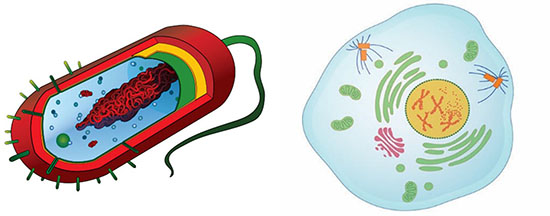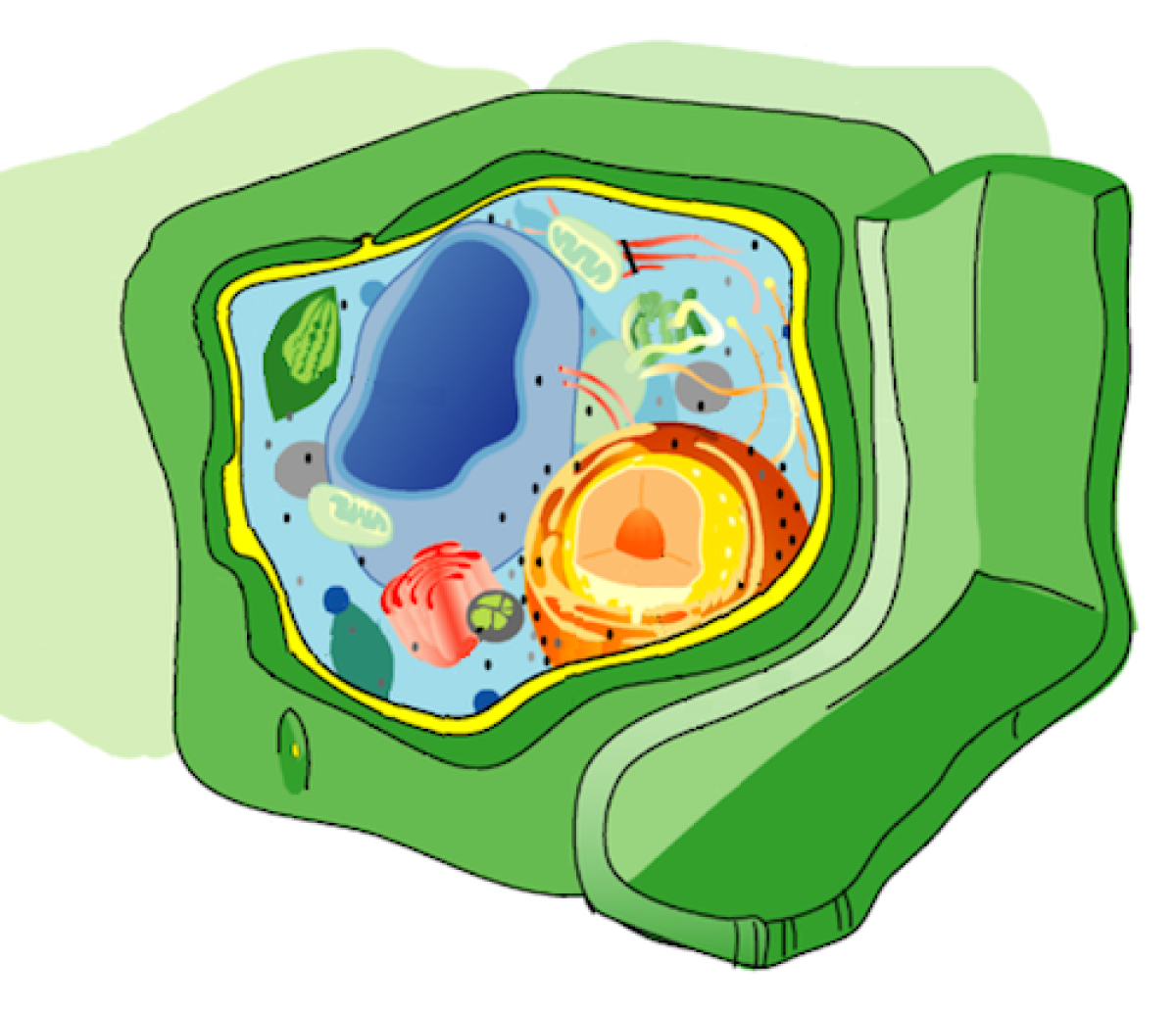Prokaryotes vs. Eukaryotes
Every cell on our planet is either a prokaryotic or a eukaryotic cell. There are many differences between the two cell types. The table on this page highlights just a few of the main differences.

| Prokaryotes | Eukaryotes | |
| Small cell size (0.2 - 2 um) | Large cell size (10 - 100 um) | |
| Nucleus absent | Nucleus present | |
| Membrane-bound organelles absent | Membrane-bound organelles present | |
| DNA in circular chromosomes | DNA in linear chromosomes | |
| Cell division by binary fission | Cell division by mitosis and meiosis |
Bacteria and microbes from the group Archaea are prokaryotes. All other life, including plants, animals, fungus, and amoebas, are eukaryotes. The eukaryotic cell shown above on the right is representative of an animal cell.
Additional images via Wikimedia Commons. Prokaryotic cell by LadyofHats.
Read more about: Cells Living in Cells
Bibliographic details:
- Article: Prokaryotes vs. Eukaryotes
- Author(s): Dr. Biology
- Publisher: Arizona State University School of Life Sciences Ask A Biologist
- Site name: ASU - Ask A Biologist
- Date published: 24 Feb, 2016
- Date accessed:
- Link: https://askabiologist.asu.edu/prokaryotes-vs-eukaryotes
APA Style
Dr. Biology. (Wed, 02/24/2016 - 12:01). Prokaryotes vs. Eukaryotes. ASU - Ask A Biologist. Retrieved from https://askabiologist.asu.edu/prokaryotes-vs-eukaryotes
Chicago Manual of Style
Dr. Biology. "Prokaryotes vs. Eukaryotes". ASU - Ask A Biologist. 24 Feb 2016. https://askabiologist.asu.edu/prokaryotes-vs-eukaryotes
Dr. Biology. "Prokaryotes vs. Eukaryotes". ASU - Ask A Biologist. 24 Feb 2016. ASU - Ask A Biologist, Web. https://askabiologist.asu.edu/prokaryotes-vs-eukaryotes
MLA 2017 Style

Plant cells are a type of eukaryotic cell.
Be Part of
Ask A Biologist
By volunteering, or simply sending us feedback on the site. Scientists, teachers, writers, illustrators, and translators are all important to the program. If you are interested in helping with the website we have a Volunteers page to get the process started.

